Inhis book, Mad Toffs, The British Upper Classes At Their Best And Worst, Patrick Scrivenor writes:‘One of the Dukes of Devonshire… was one day buying silver at Asprey, when he noticed some circular silver rings. He turned to his steward and enquired of him what they were. “Those, your Grace, are napkin rings.” “A napkin ring?” “Your Grace, when the middle classes breakfast, they take a fresh napkin, and when they have finished, they fold it, roll it and place it through the ring. They use it again for luncheon, tea, and dinner. Only at the end of the day is it sent to be laundered.” The Duke was shocked. “They use the same napkin throughout the day?” “They do, Your Grace.” “My goodness,” said the Duke, “I had no idea such poverty existed.”
Antiques dealer Lidy Baars (of French Garden House) has been buying and selling antique silver napkin rings for years. ‘Napkin rings are a relatively recent addition to tabletop accessories,’ she reveals. ‘The first ‘serviette’ rings appeared in France in the 1800s. They are thought to be an invention of the European bourgeoisie. As the upper middle classes gained more wealth, the use of napkin rings spread rapidly throughout Europe.’
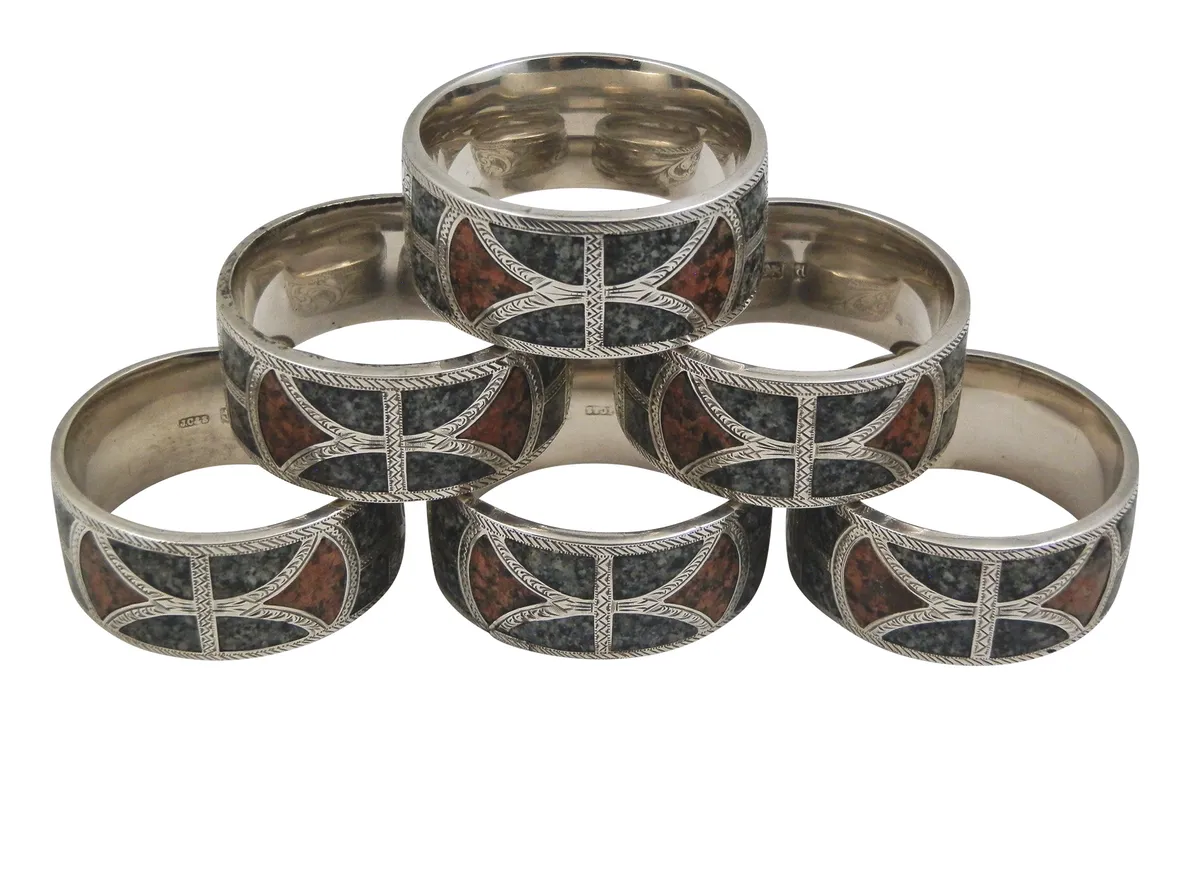
By the late 19th century, the likes of Liberty in London and Tiffany & Co in New York were producing elegant Arts and Crafts and Art Nouveau napkin rings and the craze had spread around the Western world.
Although many rings were decorative, they also had a practical purpose, as illustrated in the extract above. ‘Since most household linens were washed just once a week, napkin rings enclosed personal napkins at the family table,’ says Lidy. ‘Each ring, personalised with a name or just a number, would identify which napkin had been used by which family member so that they could continue using the exact same one until the next laundry day. Interestingly, a table laid for guests would never include napkin rings, as that was seen to indicate the napkins were not pristine.’
Of course, aristocratic people had no need for napkin rings as, after a meal, they would simply leave their used napkin crumpled for the servants to launder.
Almost every silversmith in Europe and in the US made sterling silver and plated napkin rings. ‘Figural napkin rings were especially popular, as were special rings made for children with little animals,’ reveals Lidy.
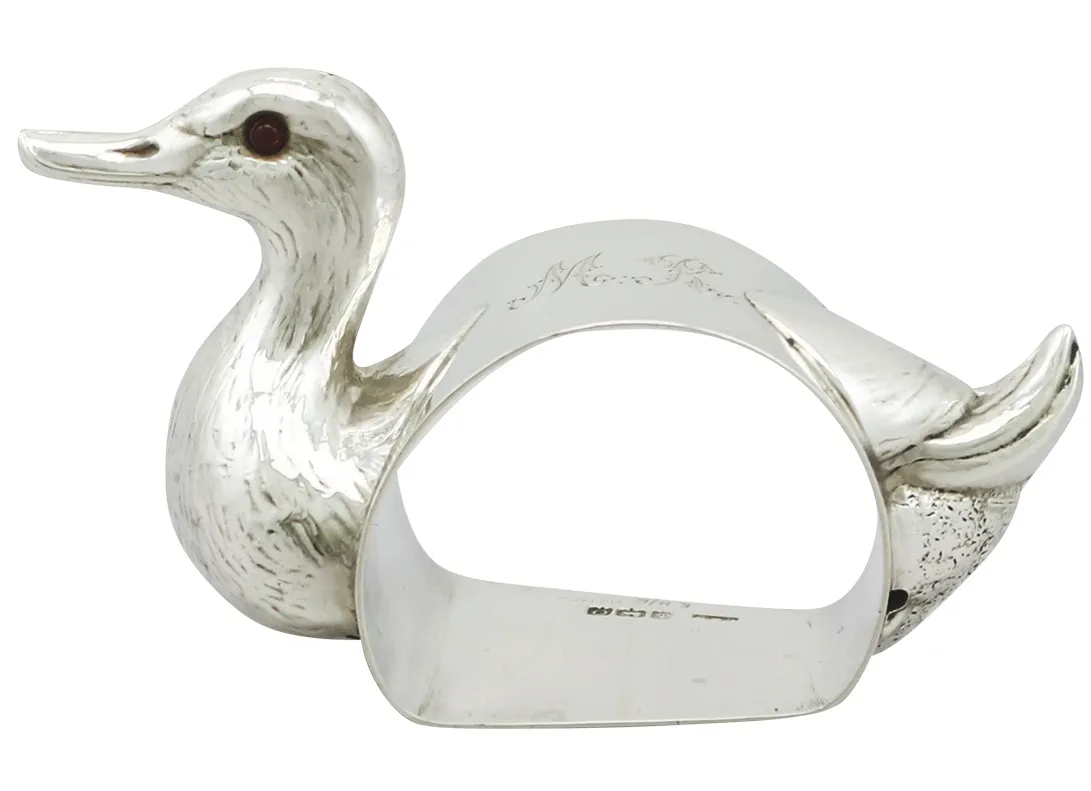
Were napkins given as Christening gifts?
As the prevalence of napkin rings grew, so did the materials they were crafted from. ‘This range eventually included materials such as wood, glass, porcelain and bone, but silver ones remain one of the most collectable and sought-after types,’ says Andrew Campbell of AC Silver.
‘Napkin rings are known to be traditional christening gifts. In some cultures they have earned the moniker ‘christening bangle’. The tradition of giving napkin rings as christening and wedding presents began in the 19th century,’ explains Andrew. ‘This practice continues today, perhaps due to the personal nature of such a gift.’
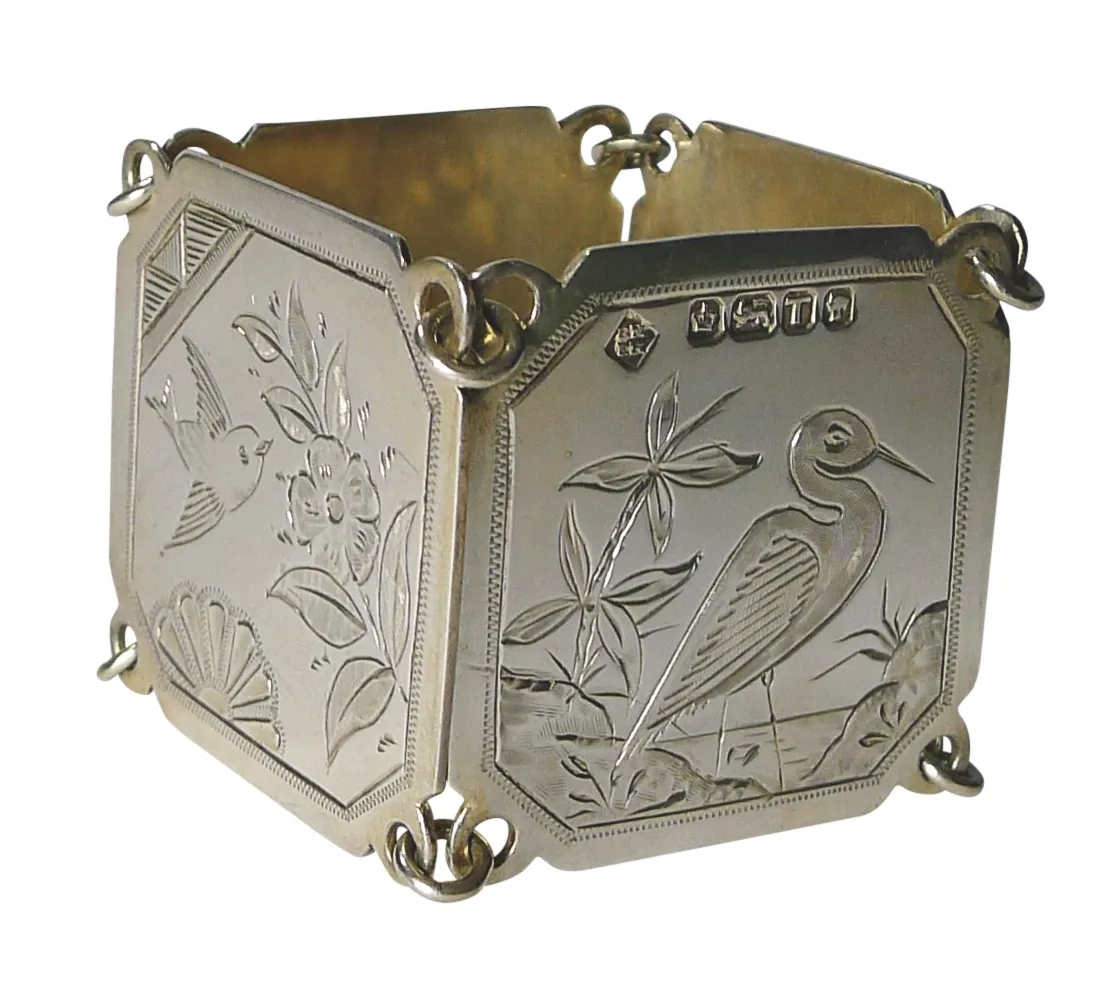
Some silver napkin ring collectors specialise. ‘There are many genres,’ says Lidy. ‘Some seek out ornate engraved monogram ones, or quadruple-plated Victorian rings, which often age to a pewter-like glow. The rings in my personal collection have romantic motifs such as cherubs and repoussé floral designs.’
Napkin rings are such intimate items that collectors often fall in love with the rings they find and can’t resist buying them. ‘I gravitate towards napkin rings that are made with great skill and care, but I mostly collect rings that capture my eye and heart,’ says Lidy. ‘I’m not a purist about my small collection. Among the sterling ‘fancy’ rings, one or two reside that are worn and scratched. Some of my favourite quite worn napkin rings are those that have ivy leaves all around and are inscribed: from a friend.’
How much do napkin rings cost?
Lidy also loves her inherited napkin rings. ‘I have my grandparents’ napkin rings and the one my husband’s grandmother used daily,’ she says. ‘They have their names engraved in them and I love having these little pieces of history in my home. As a little girl growing up, we all had our own napkin rings with our name on, too, and I cherish the memories that these rings hold.’
With such a huge variety of styles, there are rings to suit every taste, from elegant Arts and Crafts enamelled Archibald Knox designs for Liberty to fun children’s designs featuring nursery rhymes. The breadth of designs is so enormous that even experienced dealers are still caught by surprise from time to time.
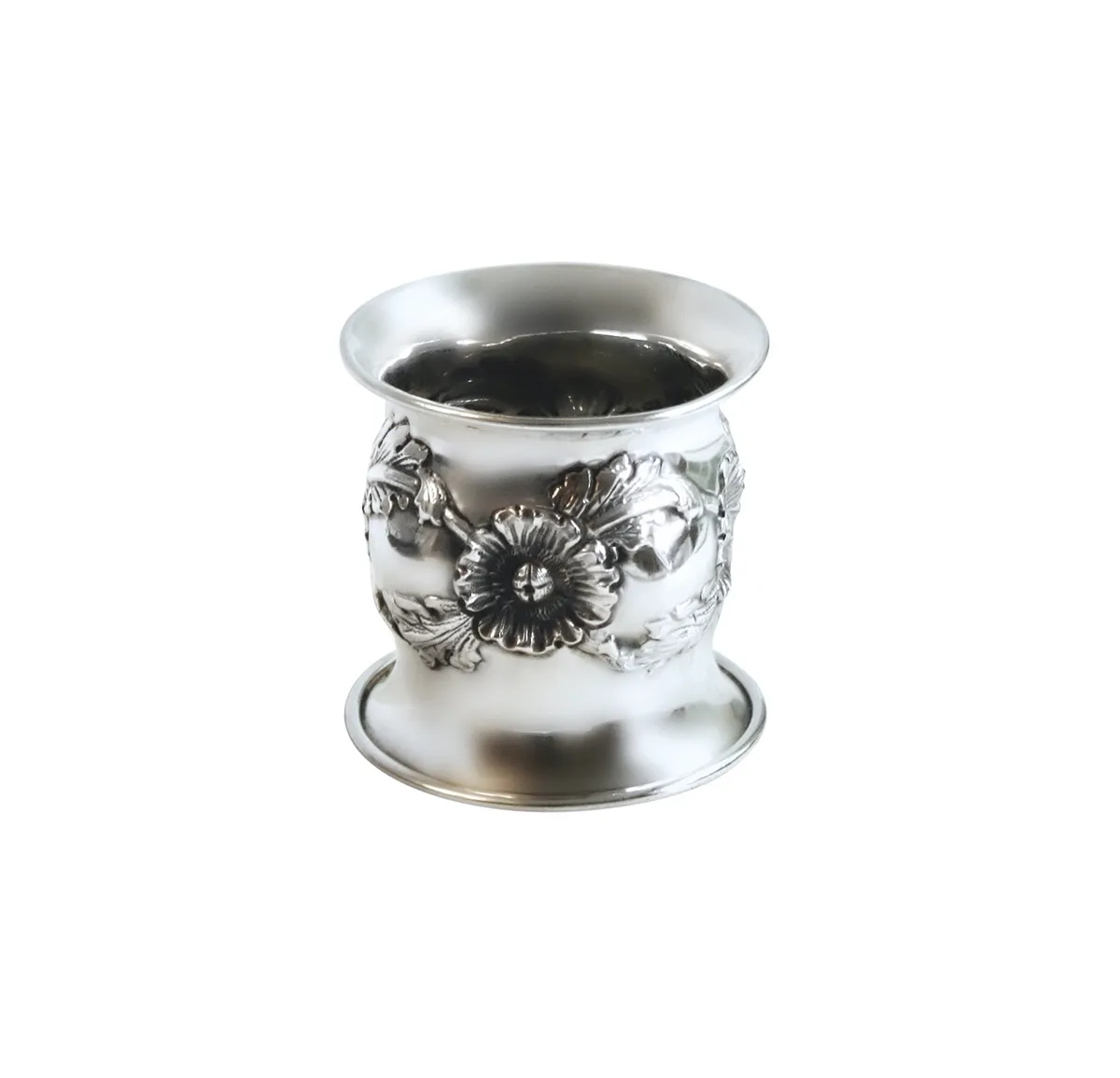
‘Standard silver napkin rings are ten a penny, but I’ve got a beautiful set of six Edwardian napkin rings in stock that are inlaid with Aberdeen Rubislaw quarry granite (dark grey) and Aberdeenshire Corrennie granite (red) for £1,200,’ says Mike Wilson of Highland Antiques. ‘They were made in 1904 and they’re really rare.’
These inlaid napkin rings were originally bought as souvenirs. ‘With the coming of the railways, people would follow Queen Victoria and Prince Albert to Royal Deeside and Balmoral Castle in the north east of Scotland,’ explains Mike. ‘While in the area, tourists would buy souvenirs – napkin rings inlaid with local granite and Cairngorm stones were very popular. Some were made by local silversmiths (William Robb of Ballater being the most famous) and some were imported from Birmingham silversmiths Joseph Cook & Son. Cook’s pieces were ‘made for the Scottish market’ and bought by local retailers in the area.’
Andrew Puckering of Puckerings Antiques recently had a quirky folding napkin ring in stock. ‘It was certainly an unusual piece,’ he marvels. ‘It sold within hours of listing at £260.’
Prices vary according to condition, quality and rarity, but you can get a nice pair of Art Deco napkin rings for around £250. At the other end of the spectrum, a set of six, cased Edwardian or Victorian napkin rings can easily fetch over £1,000. As with all collectables, rare or exceptional napkin rings can command high prices, even if they’re not antique. Margaret and Denis Thatcher’s napkin rings engraved with their names and birth dates fetched £11,875 at Christie’s in 2019.
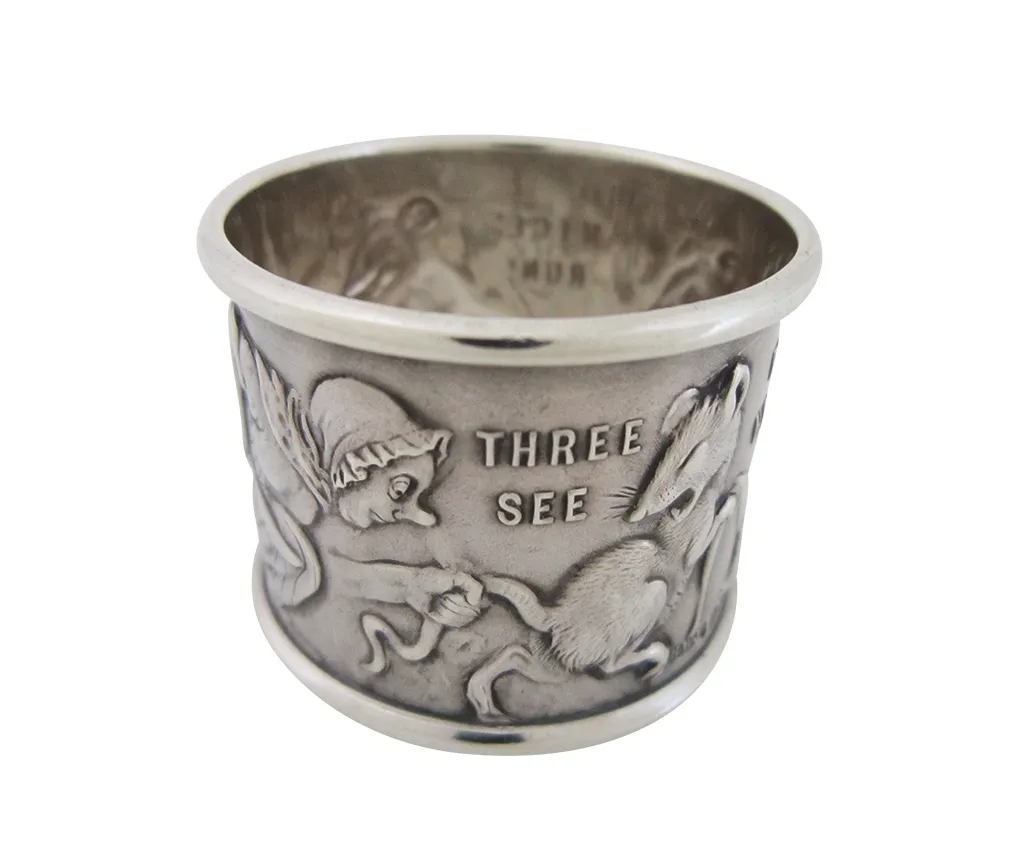
Are napkin rings back in fashion?
The introduction of paper ‘serviettes’ and the fashion for less formal dining meant that napkin rings fell out of fashion for a few decades but, thanks to a recent shift towards more eco-conscious table settings, cloth napkins are experiencing a revival and napkin rings are once again back in vogue.
‘I’m not sure what the future months will bring as far as hosting groups inside goes,’ says Lidy, ‘but I do know our clients are buying more luxury linens and silver tableware to set glorious tables. If nothing else, what this pandemic has taught all of us is that things can change in an instant, so don’t wait for the ‘perfect’ occasion to enjoy your antiques.’
What's the difference between napkins and serviettes?
According to British linguist Alan S.C. Ross, author of U and Non-U: An Essay in Sociological Linguistics (1956), ‘Non-U’ (non-upper class) people use the word ‘serviette’ whereas ‘U’ (upper class) people use the term ‘table-napkin’. This is, he notes, ‘…perhaps the best known of all the linguistic class indicators of English.’ He argues that the middle classes use ‘fancy’ words to make themselves sound more refined, while the upper classes, confident in the security of their social position, use the same plain words as the working class.

